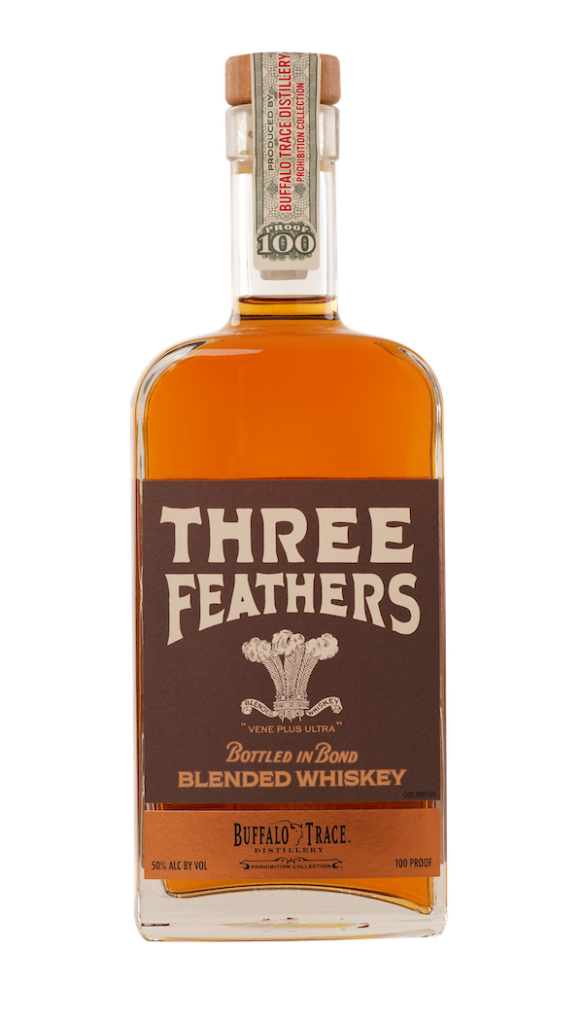
George T. Stagg Distillery (today known as Buffalo Trace Distillery), one of the six licensed to bottle medicinal whiskey during Prohibition from, is now Buffalo Trace Distillery.
In tribute to this era, Buffalo Trace Distillery tells GBOurbonBlog.com they are launching The Prohibition Collection, an annual limited-edition series. The Prohibition Collection will be rolling out in limited quantities to its distributor network, which will ship to select retailers, bars, and restaurants across the United States as of October 2023 at a suggested retail price of $999.99 (five 375ml bottles); state taxes will vary per market.

The inaugural release revives five Prohibition Era-brands including whiskeys, Bourbons, and one rye: Old Stagg, Golden Wedding, Three Feathers, Walnut Hill, and George T. Stagg Spiritus Frumenti. Each brand carries its own unique history and flavor, offering a glimpse into the past. As the oldest American distillery, Buffalo Trace continues to honor its rich heritage with such releases.
The entire collection is housed in a custom wooden display case, with each of the five 375ml bottles heavily inspired by their Prohibition Era packaging and original bottle size: even the back cartons feature the cut-out for doctors to apply the prescription for medicinal whiskey, without which one could not legally purchase alcohol.
The Prohibition Collection 2023 by Buffalo Trace
Old Stagg
a barrel-proof (132.4 proof), uncut and unfiltered whiskey featuring an oaky, vanilla aroma; sweet and mellow taste with notes of leather and dark cherries and a smooth vanilla finish. Old Stagg was originally created in honor of former owner George T. Stagg and replaced O.F.C. Bourbon as the Distillery’s flagship brand. Today, the brand lives on as Stagg and George T. Stagg, both barrel proof whiskeys that have their roots in this Prohibition era brand.

Golden Wedding
A 107-proof rye whiskey that has heavy rye on the nose; a grainy, herbal taste with notes of dill pickle and rye; and a spicy, smokey finish with a hint of banana. The brand, which dates back to 1869, was originally produced by Schenley Distilling at the Joseph S. Finch Distillery in Pennsylvania. During Prohibition, its bottling was split between Schenley’s Pennsylvania distillery and the George T. Stagg Distillery. In the late 1940’s, the brand was moved to Schenley’s distillery in Canada and would become a Canadian whiskey before ceasing to exist in the late 20th century.

Three Feathers
A 100-proof, bottled-in-bond whiskey created by Buffalo Trace Master Blender Drew Mayville. Dating back to at least 1812, Three Feathers was first advertised as a luxurious rye before becoming a bonded and then a blended whiskey. Today’s recreation presents a vanilla, charred oak aroma with stone and light tropical fruit taste, and smokey, caramel and a slight cocoa finish.

Walnut Hill
A 90-proof high-rye bourbon featuring a slightly citrus aroma with light corn and oak notes; sweet molasses, stone fruit and vanilla taste; and a smokey, woodsy finish. This historic spirit was bottled by the George T. Stagg Distillery during Prohibition with production overseen by President Albert Blanton.

George T. Stagg Distillery Spiritus Frumenti
A 110-proof wheated bourbon honoring the medicinal whiskey produced at the George T. Stagg Distillery. “Spiritus Frumenti,” which translates as “Spirit of the Grain” in Latin, existed as a generic name for medicinal whiskey during Prohibition. Tasting notes include an aroma of caramelized brown sugar; fruity yet floral taste with notes of cherry and oak; and finishes with vanilla, wheat and citrus.

What Buffalo Trace Says About the Collection…

“We stand behind our motto, ‘Honor Tradition, Embrace Change’,” Harlen Wheatley, Buffalo Trace Master Distiller tells us. “Each of these brands disappeared slowly in the years after Prohibition, but they were integral to our survival. Without them, today there would be no Buffalo Trace, Eagle Rare or Weller bourbons. The Prohibition Collection is a tribute to these great whiskeys from our past.”

“At Buffalo Trace Distillery, we build brands based on real, authentic stories firmly rooted in the rich history of excellent whiskey making in America,” Andrew Duncan, Global Brand Director for Buffalo Trace Distillery tells BourbonBlog.com. “When we discovered these brands – and others – in our distillery’s history, we could not wait to bring them back to life and tell their stories again. By aging and selling barrels from numerous distilleries all over the country, the Buffalo Trace Distillery site played a key role in keeping American Whiskey alive during one of the most unique periods in the history of the spirits industry.”







 LATEST PODCAST
LATEST PODCAST